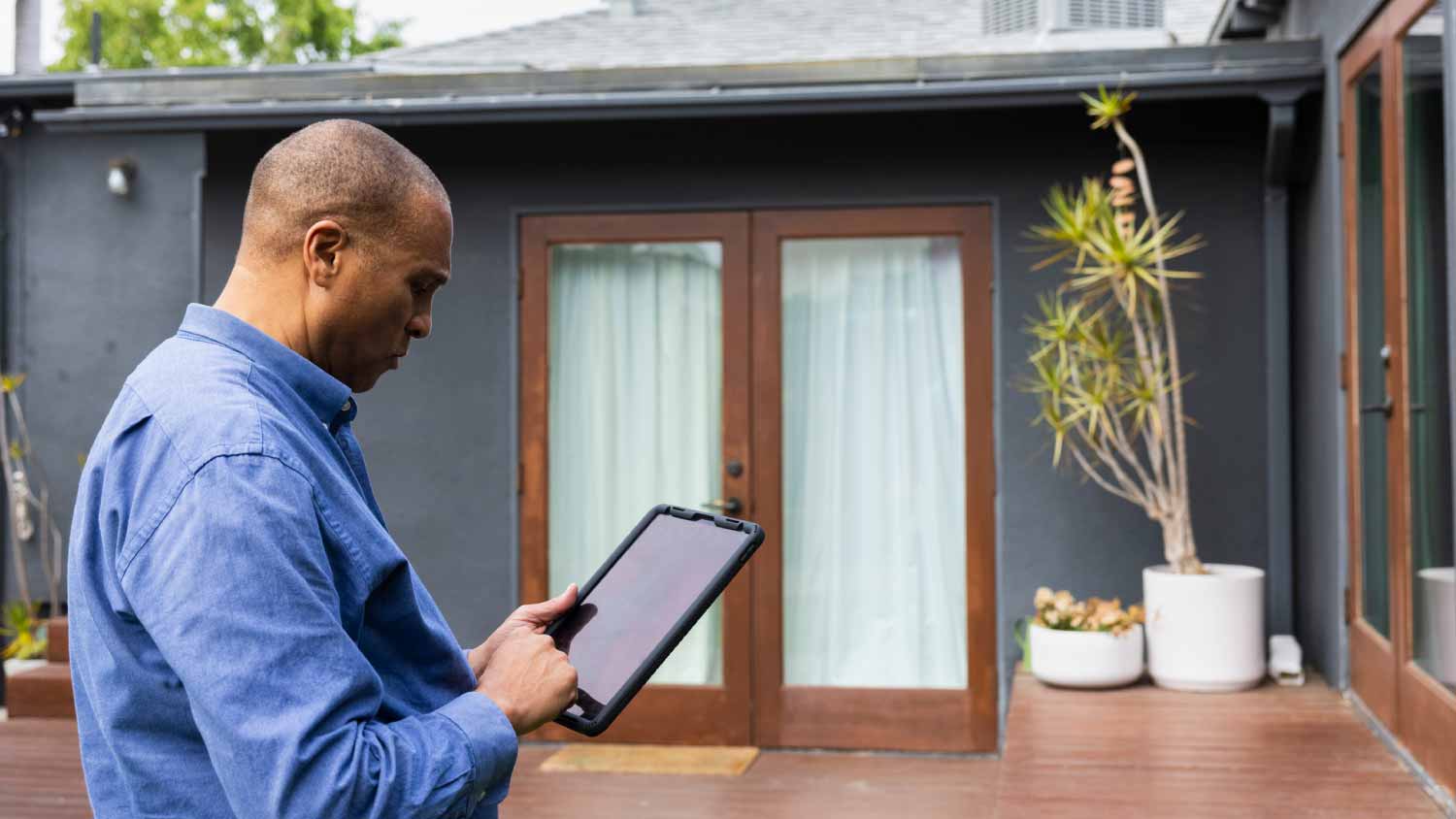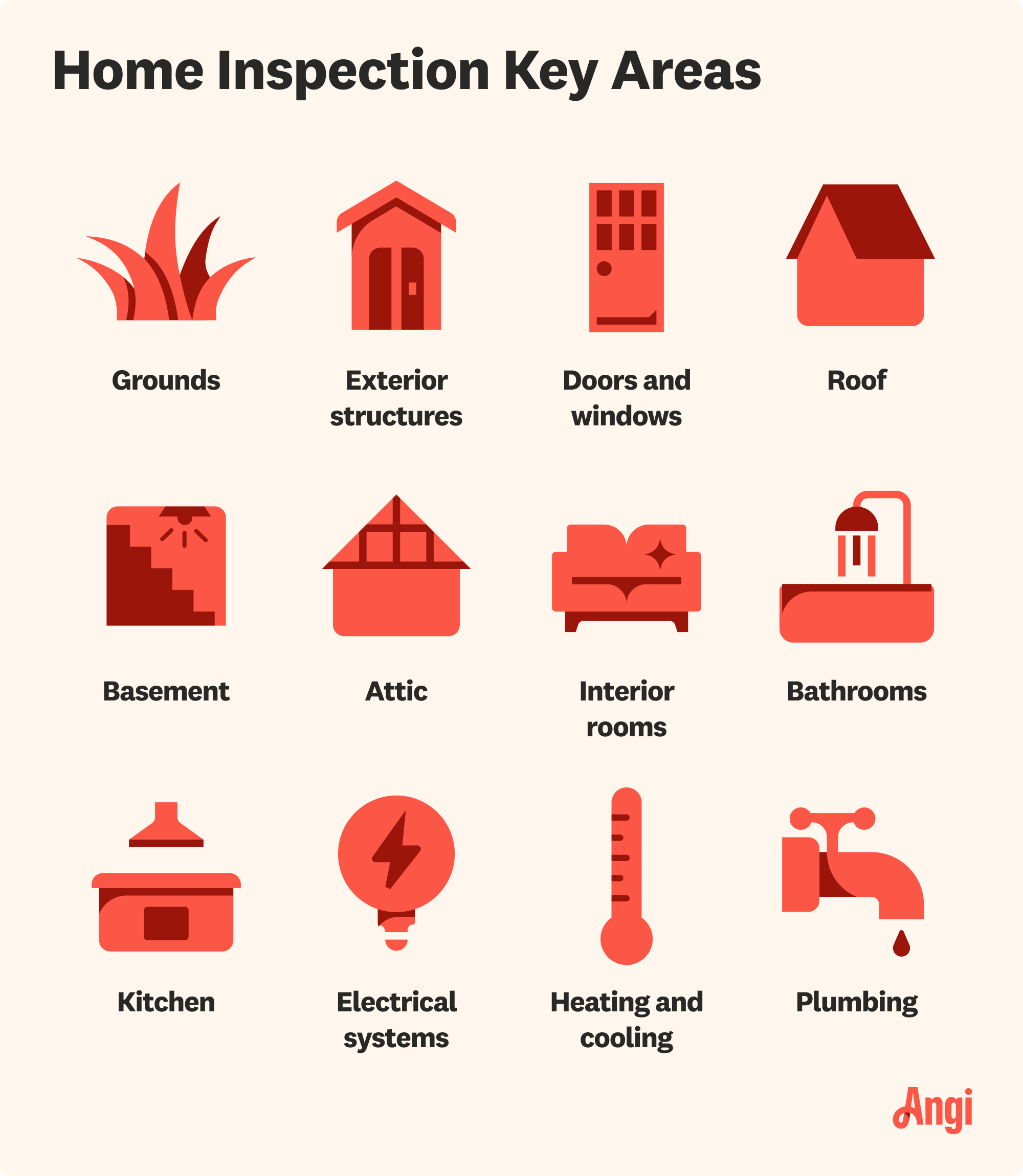
Drone roof inspection costs vary depending on the roof’s size, complexity, and material. Use this guide to budget for a drone roof inspection.
Learn what’s on your home inspector’s checklist before you close the deal


A home is probably one of the biggest purchases you’ll ever make, which is why a home inspection is one of the most important steps in the home-buying process. A home inspection helps you assess the main components of the home, such as structural integrity, heating and cooling, plumbing, electrical systems, and more. With so many systems and areas to consider, having a comprehensive home inspection checklist makes the process a little bit easier.
Professional and licensed home inspectors are best for assessing a home and can create a reliable and thorough home inspection report that tells you all about the home as well as what repairs it needs. Besides providing reassurance about certain concerns, home inspections can also provide helpful and in-depth insights that you likely wouldn’t come to as a non-professional.
Getting started with a DIY home inspection checklist can help you better understand the process so you can direct your professional home inspector to any points of concern. Just note that a professional home inspection is worth it, even if you feel comfortable buying a home after your DIY inspection.

Professional home inspectors often start by checking out the exterior of the home. By visually inspecting the foundation, walls, landscaping, drainage, and other relevant areas, a home inspector can provide an assessment that describes the condition and repair needs of the home’s exterior, especially for older homes or those that are located in harsher climates.
Proper grading drainage and downspout drainage away from the house with no standing water
Septic tanks are in good shape and have no signs of leaks
Landscaping, driveways, and walkways are in good condition with no significant damage, wear, or trip hazards
Detached structures, such as sheds or fences, don’t have evidence of rotting wood or termite damage
No trees touching the house or hanging over the roof
Stair and deck railings are secure
Visible foundation is in good condition without significant cracks
Exterior walls are secure and structurally sound with no signs of sagging or bowing
Door frames and windows appear straight
Siding has no decay, cracks, or other significant damage
Bricks appear undamaged with no cracks or missing mortar
Paint isn’t stained or flaking off
No large cracks in the stucco
No wood-to-ground contact
Doors and windows open and latch properly
No broken glass
No damaged or missing screens
No condensation inside double-pane or triple-pane windows
Frame joints are caulked
Storm windows or thermal glass installed if necessary
No damaged or missing shingles
Gutters are properly attached to downspouts and aren’t blocked or damaged
Chimneys appear straight and have no signs of damage
Flashing around roof penetrations
No signs of excessive roofing cement, tar, or caulk
A standard interior inspection checklist provides a visual report of the condition of areas such as the basement and attic, various interior rooms, plumbing, electrical, and the kitchen.
No standing water or excessive moisture
No efflorescence or water stains on concrete
Visible foundation shows no major cracks or flaking
No sagging, stains, or insect damage to structural wood
No signs of pests
Proper ventilation
Proper insulation
No illegal finishes
Stairs are safe and have proper handrails
Walls and ceilings have no cracks, water spots, or other damage
Enough electrical outlets in every room with proper placement
Electrical outlets and switches are functional
GFCI outlets in kitchens and bathrooms
Ceiling, trim, and wall surfaces are in good condition and don’t contain lead paint
Properly installed trim
Doors latch properly
Visible plumbing is in good condition and shows no signs of leaks or water damage
Tub, sink, and shower drain at proper speeds
Toilets flush and fill properly and have no damage, rocking, or stains
Adequate cold and hot water pressure for all fixtures
No signs of leaking around the base of the tub or shower
Tub and shower caulking is in good condition
Tiles are secure with no cracks
Functional exhaust fans venting to exterior and not to attic
Plumbing under the sink is in good condition with no signs of leaks or water damage
Adequate water flow to sink and proper drainage
Functional exhaust fans venting to the exterior
Built-in appliances, such as the stove, fridge, and dishwasher, are operational
Garbage disposal is operational
Cabinets and countertops are in good condition and drawers and doors open and close properly
Service panel has adequate capacity with all cables attached properly and no fuses or breakers overheating
Visible wiring in good condition
No exposed splices
No knob-and-tube wiring
No aluminum cable for branch circuits
Lights and switches work properly throughout the home
Outlets are properly grounded
Air conditioning and heating operate well throughout the home
No gas odor
Air filters are clean
No rust around cooling unit
Ductwork in good condition and free from major air leaks
Flues have no open seams and slope to chimney connection
Fireplace is clean and properly maintained
AC and furnace are not older than 15 years
Visible pipes have no signs of leak or damage
Drain pipes slope downward to septic or sewage system
Well water test is acceptable, if applicable
Water heater is appropriate size for home, shows no size of rust, and is vented properly
Hot water temperature doesn’t exceed 125 degrees Fahrenheit
Smoke detectors and carbon monoxide detectors are functional and in required and recommended areas
Railings are secure and in good condition
Stairway treads and risers are secure
No signs of asbestos tiles or insulation

Whether you’re purchasing a brand-new or older home, taking extra steps to verify its condition can help you avoid hazards and headaches in the future. Most licensed home inspectors can perform extra tests and specialized types of home inspections, or they can suggest another professional who can, depending on what’s included in the home inspection they complete first.
Common home inspection add-ons include the following:
Termite and pest inspection
Radon testing
Asbestos testing
Mold inspection
Foundation inspection
Sewer scope inspection
Roof inspection
Plumbing inspection
Electrical inspection
HVAC inspection
Structural inspection
Using this home inspection checklist, work with your inspector to get a sense of your prospective home’s condition and identify any red flags. Don’t be afraid to ask for clarification or further details on any areas of concern—make sure to ask any questions you have for your home inspector so you don’t find any surprises after you’ve closed the deal. The right professional will be happy to explain their findings, giving you the confidence and assurance you need to make an informed decision about your home purchase.
When it comes time to hire a home inspector, the first thing you need to do is make sure they’re impartial. Don’t take inspector recommendations from the seller, seller’s agent, or seller’s attorney, and don’t accept past inspection reports in lieu of paying for one yourself.
You can ask your own agent for recommendations, or ask friends and family members if they have professionals they recommend. You can also use our database to search for local home inspectors who have positive reviews from other homeowners like you.
It’s a good idea to interview a few home inspectors before hiring one to figure out which one seems like the best value. You can ask them for references from past clients or a sample inspection report they completed in the past to get a sense of the quality of their work. You can also ask them how they go about inspecting specific parts of the home to gain some confidence in their work and their abilities.
From average costs to expert advice, get all the answers you need to get your job done.

Drone roof inspection costs vary depending on the roof’s size, complexity, and material. Use this guide to budget for a drone roof inspection.

If you’re buying a home, having an inspection offers reassurance that it’s in good condition. How much a home inspection costs varies depending on the home's size, age, condition, and location.

Home appraisals are an important part of buying or selling a home and getting a mortgage loan. Learn more about home appraisal costs and what they include.

Not sure what you should expect from an attic inspection? This list outlines what your inspector will look for during the inspection.

Buying a house “as-is” means the seller doesn’t need to make any repairs before you move in. Learn more about the pros and cons of as-is homes.

Experiencing a house fire is an incredibly stressful event. Here’s what to do immediately after to keep yourself and your loved ones safe.